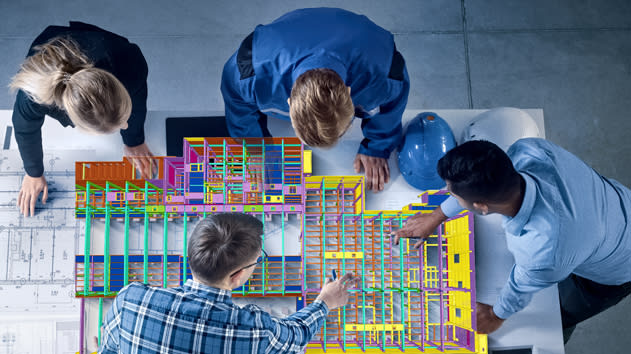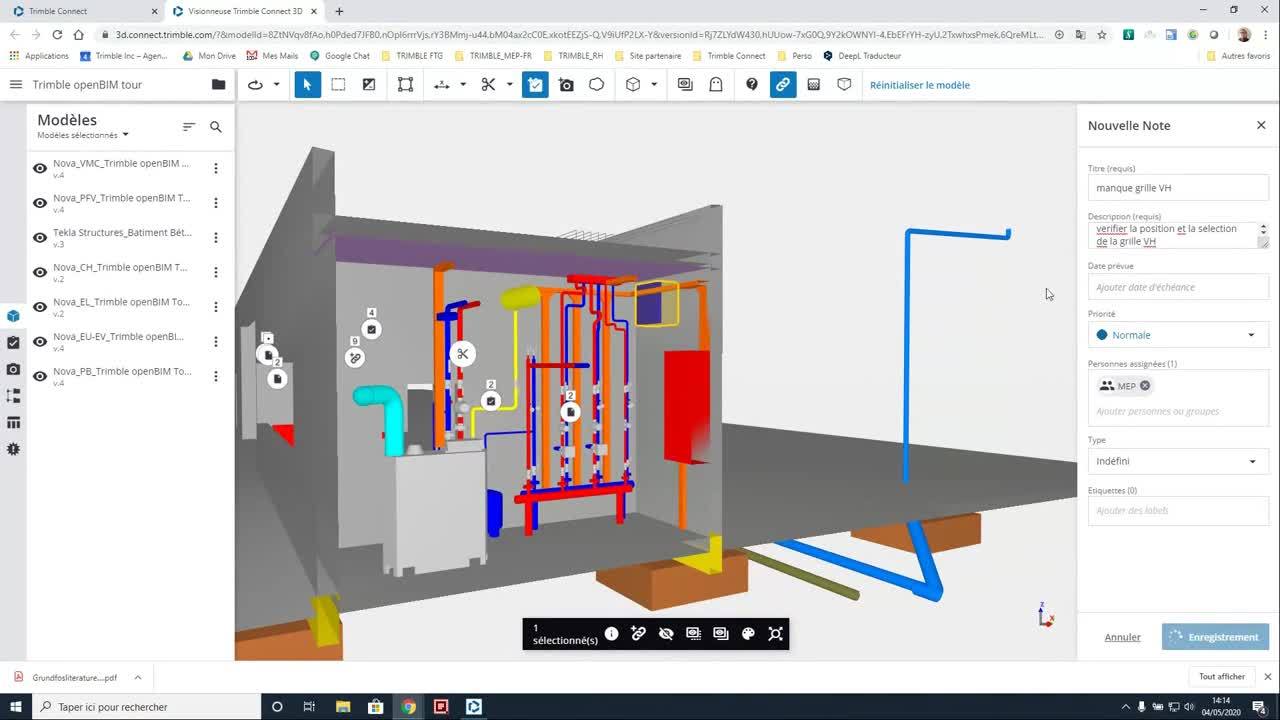
Learn what Levels of Development (LOD) mean in Building Information Models (BIM) and how they define model reliability throughout different phases in the construction project from conceptual design to as-built accuracy.
What is the LOD? In the world of Building Information Modeling (BIM), LOD stands for Level of Detail or Level of Development. It is a term used to describe the precision of a model.
LOD vs. Level of Detail (LoD)
It's easy to confuse "Level of Development" (LOD) with "Level of Detail" (often also abbreviated as LoD), but they have distinct meanings. Let's clarify the difference between these commonly mixed terms.
- Level of Detail (LoD): generally refers to how much graphical detail is shown in a model element. It’s about how much it looks like the real thing. For example, a chair model could be incredibly detailed, showing every stitch in the fabric and the wood grain.
- Level of Development (LOD): is much broader. It includes the graphical representation, but crucially, it also encompasses the amount of information attached to the element and, most importantly, the degree to which project team members can rely on that information.
LOD is about reliability and the richness of information, not just how graphically detailed it looks. A highly detailed graphical model isn't useful if the underlying information is wrong or missing. Conversely, a graphically simpler element can be highly valuable if its attached data is accurate and dependable for the task at hand. LOD helps define that balance.
What are Levels of Development (LOD) in Building Information Modeling (BIM)?
The LOD Specification enables practitioners in the AEC industry to specify and articulate with a high level of clarity the content and reliability of BIMs at various stages in the design and construction process. Think of it as a reliability scale. It tells you how much you can trust the information (like size, shape, location and even data like manufacturer or cost) associated with a part of a digital building model. In short, the LOD helps define model deliverables, milestones and handoffs.
Each of these stages represents a different LOD. The higher the LOD, the more developed the element is, and the more reliable its information. This clear articulation allows model authors to define what their models can be relied on for and allows downstream users to clearly understand the usability and the limitations of models they are receiving.
The Specification does not prescribe what LOD is to be reached at what point in a project but leaves the specification of the model progression to the user of this document. To accomplish the document’s intent, its primary objectives are:
- To help teams, including owners, to specify BIM deliverables and to get a clear picture of what will be included in a BIM deliverable.
- To help design managers explain to their teams the information and detail that needs to be provided at various points in the design process.
- To provide a standard that can be referenced by contracts and BIM execution plans.
Note that the LOD specification does not replace a project BIM Execution Plan, but rather is intended to be used in conjunction with such a plan, providing a means of defining models for specific information exchanges, milestones in a design work plan and deliverables for specific functions.
A brief LOD history
Starting around 2011, the BIMForum began to develop a more detailed and widely interpretable LOD Specification. This specification is updated regularly and provides clear definitions for what each LOD level means for various building components.
The development of LOD standards was driven by a simple need: as more people started using BIM, they needed a way to say, "This is how much you can trust this part of the model right now."
Breaking down the 6 levels of LOD
The BIMForum LOD Specification defines several key levels, from LOD 100 up to LOD 500. Think of these as milestones in an element's journey from a rough idea to a real, installed object. Each level captures increasing detail up to as-built conditions.
LOD 100 - conceptual design
At this level, elements are not represented geometrically: the exact location, shape or size of an element cannot be derived from the model. Instead, elements are represented with symbols or another generic representation.
LOD 200 - design development
According to the BIMForum specification, elements at LOD 200 are represented with generic placeholders. The approximate size and shape of elements and systems are shown. At this level, your team will get an idea of the shape and approximate size and you may get insight into rough quantities, but they are still approximate.
LOD 300 - documentation
At this point, the model includes information about the size, shape, location, orientation and quantity of the elements. You can measure information directly from the model. It’s not necessary to look up the dimensions in notes or call-outs. You can derive measurements directly from the geometry. At LOD 300, a project origin has been defined and the location of elements are accurate with respect to this origin.
LOD 350 - model coordination
For modeling and coordination, LOD 350 is often required. At this level, parts that are needed for coordination with other building systems are included in the model. This means that interfaces with other building systems are graphically represented and that supports and connections are included. This might mean showing base plates, anchor bolts or specific connections to beams if those connections are critical for coordinating with, say, a nearby pipe or duct. It’s not full fabrication detail, but enough detail to ensure different systems fit together without clashing and to understand assembly requirements.
LOD 400 - ready for construction
At this level, specific system information is included and elements are modeled with the necessary level of detail and accuracy for the fabrication of the components. Graphic and non-graphic information is included that will guide the fabrication, assembly and installation processes. It includes complete details, specific part numbers and precise instructions for making the component. At this stage, prefabrication sheets and cutting lists can be derived from the model and components can be ordered. A model at this LOD level is ready for construction and fabrication.
LOD 500 - field verified
If your model will be used for facilities management, you will most likely be asked to model your systems at LOD 500. This level means that the elements in the model have been verified in the field. As-built models fit in this category. Note that this does not mean that the systems have been modelled at a higher level of information or with more detail. At LOD 500, a model can look the same as a model at LOD 400. The difference is that at LOD 500, the model has been verified on site and therefore has a higher level of reliability.
Understanding these levels helps you ask the right questions: "What LOD do we need for the structural frame at this stage?" or "Is this HVAC unit modeled to a high enough LOD for us to coordinate our pipe runs around it?"
Building clarity and success with LOD
Consistent and clear use of LOD standards is like giving your project team a super-powered communication tool. It helps everyone understand what to expect from the BIM model at each stage. When different teams (architectural, structural, mechanical, electrical, plumbing) know what LOD to expect from each other at various stages, they can integrate their work more effectively.

When LOD is clearly defined and followed:
- Architects and engineers know how much detail to put into their designs at each phase.
- Contractors can better understand the design intent and plan construction more effectively.
- Owners get a clearer picture of what they're investing in and can receive a more useful model at handover if required.
By making LOD a standard part of your project vocabulary and workflow, you're not just adopting a technical standard; you're investing in clarity, efficiency and the overall success of your projects.
Find out how you can use Trimble's 3D modeling solutions to create precise 3D models that put BIM into production and eliminate waste. You can automate design and detailing processes, transfer design attributes seamlessly and and more.
















